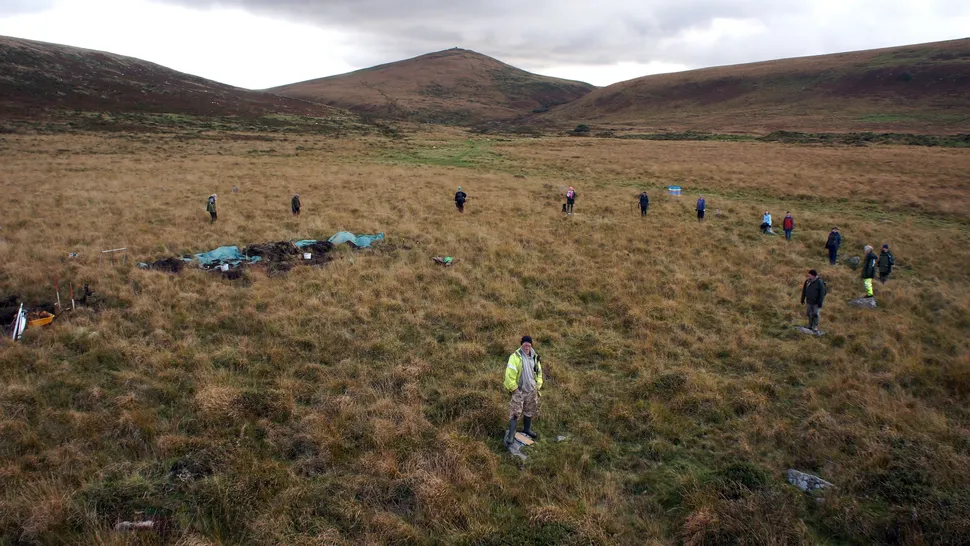Two newly discovered stone circles, built about 5,000 years ago in what is now the southwest of England, are the latest to show that Stonehenge was not the only Stone Age circle built in the region.
The new finds, according to Alan Endacott, the independent archaeologist who found them, reinforce the idea that prehistoric people constructed a “sacred arc” of stone circles around high land in the area during the Neolithic period, or New Stone Age.
Endacott, who is studying for a doctorate in archaeology at the University of Exeter, has searched the open uplands of Devon’s Dartmoor for decades. He used scientific techniques to confirm the discoveries there earlier this year; and a volunteer excavation team worked at one of the sites in September and October.
Endacott told Live Science that one of the newfound circles is similar in size and construction to the central part of Stonehenge, which was built around the same time but about 100 miles (160 kilometers) to the northeast.
Analysis suggests several stones at Stonehenge came from elsewhere; and Endacott thinks some of the builders of Stonehenge may have built the newfound Dartmoor circle as well.
“The people who built Stonehenge clearly traveled long distances,” he said. “It’s possible that they had contact with people who built [the Dartmoor circle] if they didn’t travel there themselves.”
Endicott has named the stone circle “Metheral,” after the hill above it. It consists of about 20 “standing” stones up to 40 inches (1 meter) high, placed in an oval shape measuring about 130 feet (40 m) by 108 feet (33 m) — although there is evidence there were more stones there in the past, and many of the remaining stones had either fallen over or were hidden by vegetation, he said.
Stone Age “sacred arc”
The other newfound stone circle lies about 1 mile (1.6 km) north of the Metheral circle and Endacott has dubbed it “Irishman’s Wall,” after a local land feature.
Only about six stones survive there, and they are hard to see; so Endacott used resistivity and magnetic gradiometry instruments to map it by determining where the ground had been disturbed in the past.
Importantly, the Metheral circle lies at the northern tip of a 5-mile-long (8 km) “arc” of eight Neolithic stone circles, built in a near-perfect half-circle to the east and south.
In 2008, Endacott unearthed a Neolithic stone circle near a hill known as Sittaford Tor at the southern end of the arc; and he thinks a full ring of stone circles once stretched between the Metheral circle and the Sittaford circle, effectively enclosing some of Dartmoor’s highest land.
The Irishman’s Wall circle, however, lies about a mile north of the arc. Endicott thinks it was part of an entranceway into what was regarded in Neolithic times as a sacred area.
Neolithic landscape
Dartmoor is named for the River Dart, which originates there; and the English word “moor,” which means open uplands or wastelands, possibly from an Old English word for swamp.
The south-west of England is rich in the remains of Neolithic monuments, including stone circles, burial mounds and chamber tombs, as well as other mysterious structures not yet fully understood.
Endacott said the “sacred arc” of stone circles on Dartmoor was a relatively early archaeological idea, but that his 50-odd years of fieldwork and research suggested it was much larger than previously thought.
Independent archaeologist Tom Greeves, an expert on Dartmoor who was not involved in the discoveries, told Live Science in an email that the finds confirmed there had been active Neolithic presence in the region.
And University of Exeter archaeologist Susan Greaney, who also was not involved, told Live Science that Endacott’s discoveries show the potential for other archaeological finds still to be made.
“This ‘arc’ of circles, measuring more than 8 km [5 miles] across, is rather extraordinary, and suggests the upland area of northern Dartmoor it encloses was particularly special to prehistoric people,” she said in an email.
